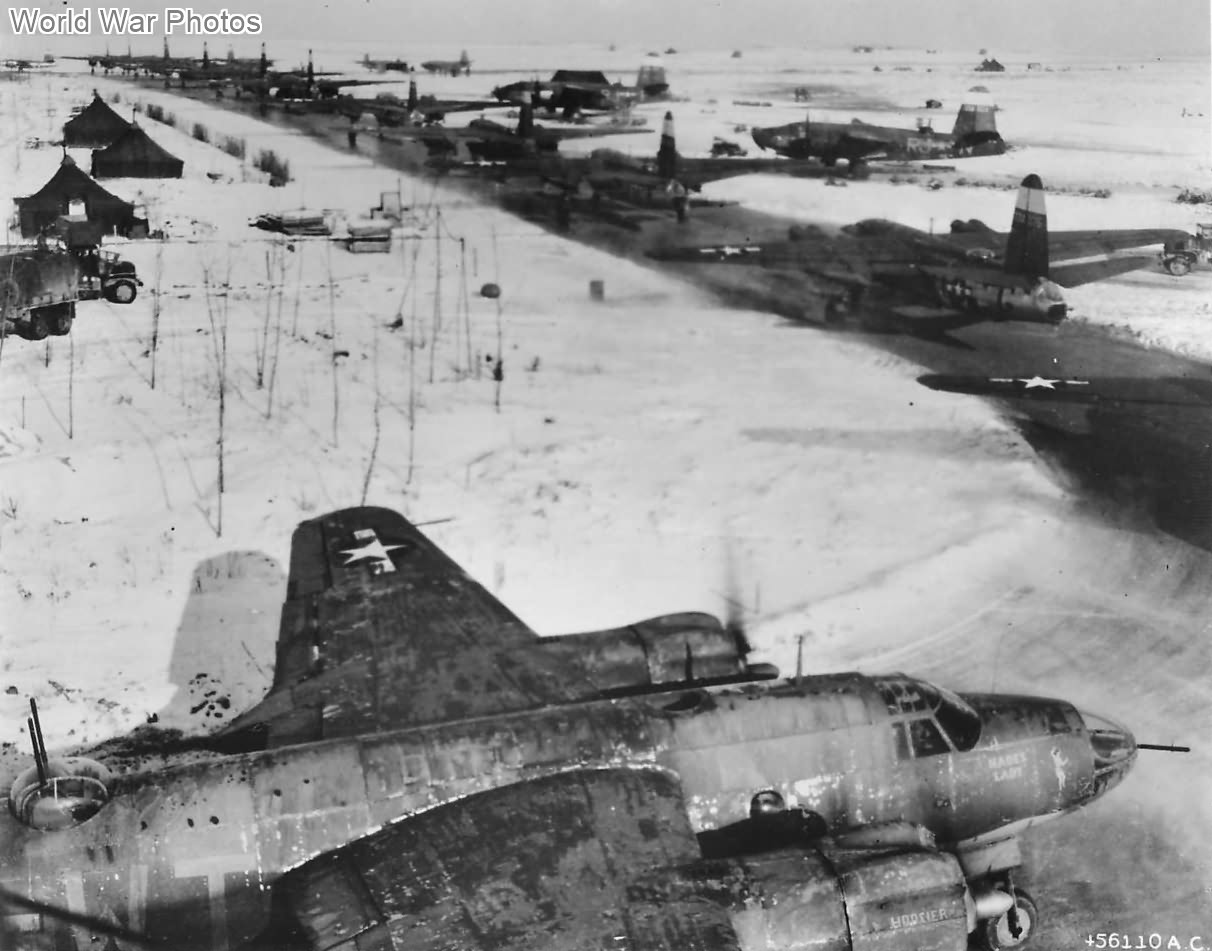The 323rd Bomb Group (BG), part of the 9th Air Force during World War II, played a significant role in the European Theater of Operations, particularly in the lead-up to and aftermath of the D-Day invasion.
Key Operations and Assignments:
May 12, 1943: Initially based at Horham with the 8th Air Force, the 323rd BG began its combat operations.
June 1943: The Group moved to Earls Colne and initiated operations against strategic targets in France, Holland, and Belgium. These operations continued even after the 323rd BG was reassigned to the 9th Air Force on October 16, 1943.
Early 1944: The Group’s B-26 Marauders targeted V-1 rocket sites in the Pas de Calais and carried out concerted attacks on airfields in Holland by the end of February.
June 6, 1944 (D-Day): The 323rd BG focused on road and rail communications to support the Normandy invasion. The Group played a critical role in the July breakthrough at St. Lo, aiding the Allied advance.
August 1944: The Group relocated to France and soon after conducted its first night mission, attacking gun batteries near St. Malo. For this operation, the aircraft were repainted black for nighttime camouflage.
September 1944: The 323rd BG successfully neutralized strong points at Brest before shifting its focus to supporting operations in eastern France, particularly against the Siegfried Line.
December 1944: During the Battle of the Bulge, the Group’s efforts in destroying enemy transport bringing reinforcements to the Ardennes were highly effective, earning them a Distinguished Unit Citation (DUC) for their actions from December 24-27, 1944.
April 1945: The Group continued its offensive operations, supporting the advance through Germany until the end of hostilities in Europe.
Post-VE Day: The 323rd BG participated in the disarmament program before returning to the United States in December 1945.
Organizational Details:
Squadrons and Codes:
- 453rd Bomb Squadron (BS) [VT]
- 454th Bomb Squadron (BS) [RJ]
- 455th Bomb Squadron (BS) [YU]
- 456th Bomb Squadron (BS) [WT]
Bases:
- Horham, Suffolk – Arrival: May 12, 1943
- Earls Colne, Essex – June 14, 1943
- Beaulieu, Hampshire – July 21, 1944
- Lessay, Basse-Normandie – August 26, 1944
- Chartres, Centre-Val-de-Loire – September 21, 1944
- Laon/Athies, Picardie – October 13, 1944
- Denain/Prouvy, Nord-Pas-de-Calais – February 9, 1945
- Gablingen, Germany – May 15, 1945
- Landsberg, Germany (HQ only) – July 16, 1945
- Clastres, France – October-December 1945
Detachments were also stationed at various locations in Germany, including Augsburg, Haunstetten, Innsbruck, Nesselwang, Schongau, Leipheim, and Kempten.
Commanding Officers:
- Col. Herbert B. Thatcher
- Col. Wilson R. Wood – November 13, 1943
- Col. Rollin M. Winingham – February 14, 1945
- Lt. Col. George O. Commenator – August 1945 (dates unspecified)
Aircraft:
- B-26 Marauder: The primary aircraft used by the 323rd BG during its operations.
Group Markings:
- The 323rd BG was known as “The White Tails,” derived from their aircraft marking, a white horizontal stripe approximately 30 inches high, which was displayed across the fin and rudder of their planes. The squadron code and call letters were positioned on both sides of the fuselage near the national insignia, with colors initially in RAF Sky and later in black on natural metal finishes.
Motto and Sobriquet:
- Motto: “Vincamus Sine Timoris” (“Without Fear We Conquer”)
- Sobriquet: “The White Tails”
Unit Decorations:
- Distinguished Unit Citation (DUC): Awarded for actions in Belgium and Germany from December 24-27, 1944.
